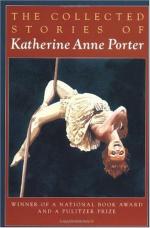|
This section contains 3,508 words (approx. 12 pages at 300 words per page) |

|
SOURCE: “Myth and Epiphany in Porter's ‘The Grave,’” in Studies in Short Fiction, Vol. 15, No. 3, Summer, 1978, pp. 269–75.
In the following essay, Rooke and Wallis assert that critical interest in Porter's “The Grave” has long ignored the story's dominant themes—particularly the fall of man—in favor of a series of less important symbols in the story.
About a decade ago, there arose a flurry of critical interest in Katherine Anne Porter's story “The Grave.” This inquiry quickly subsided, apparently satisfied that “The Grave” had been adequately explained. In fact it had not, for an intense preoccupation with the predominating symbols of the short story had entailed a concomitant limiting of critical focus, so that the widest implications of the story were ignored. In addition, the last note to emerge (some five years after the initial show of interest) pursued the tendency of the criticism which had preceded it...
|
This section contains 3,508 words (approx. 12 pages at 300 words per page) |

|


